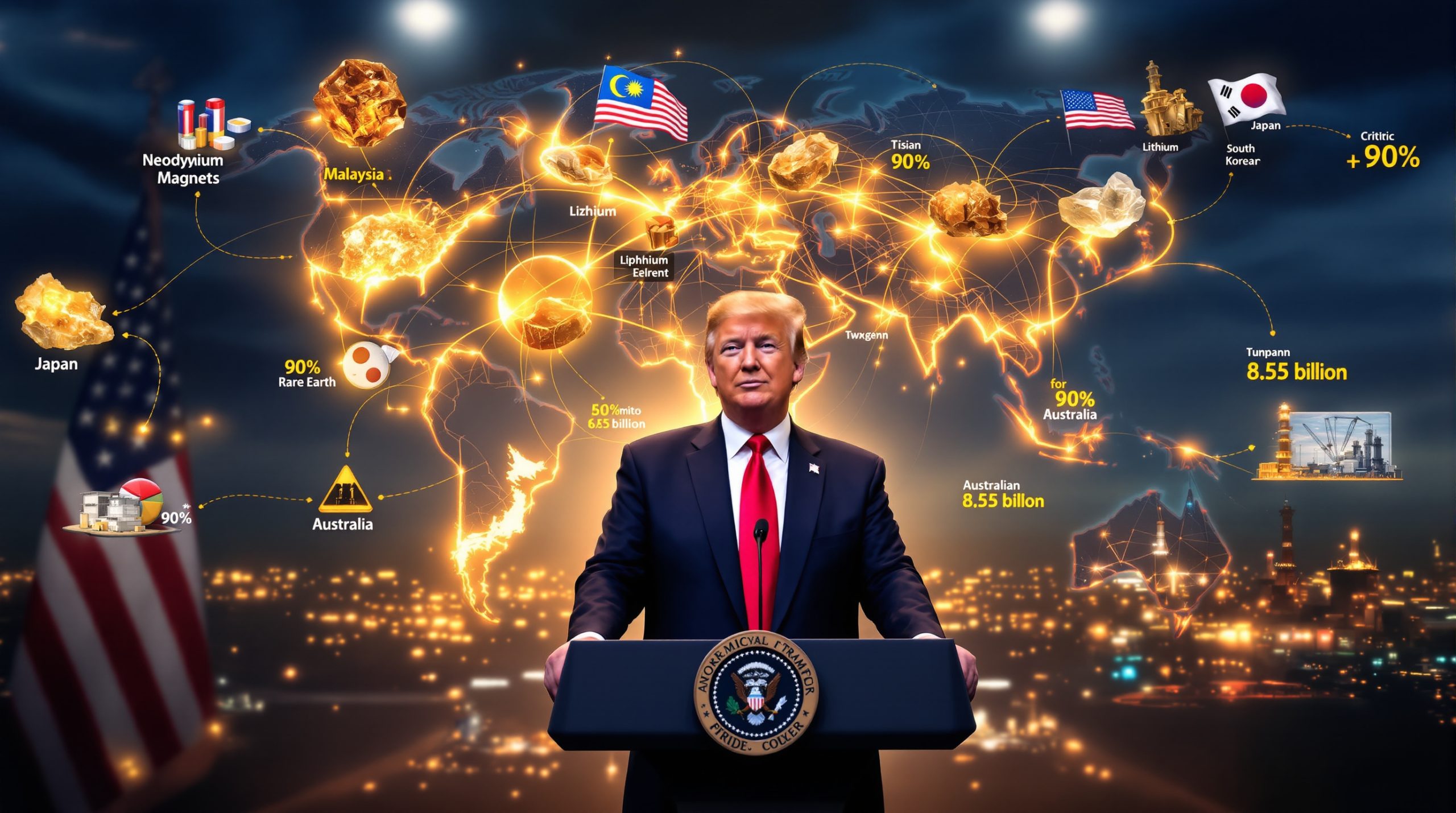What is Happening with Burkina Faso's Gold Mining Sector?
Burkina Faso's recent completion of nationalizing five gold mining assets marks a pivotal shift in its economic strategy, transferring ownership to the state-controlled Société de Participation Minière du Burkina (SOPAMIB) in June 2025. This move, affecting operational mines and exploration licenses previously held by international firms like Endeavour Mining and Lilium, aligns with broader regional trends of resource nationalism in West Africa. With record gold prices surging 27% in 2025, the government aims to centralize control over its fourth-largest African gold reserves, which produced over 57 tons in 2023. However, this policy raises questions about foreign investment, operational efficiency, and the state's capacity to manage complex mining operations.
The Nationalized Assets: A Closer Look
Burkina Faso's nationalization encompasses two producing mines and three exploration licenses. The Wahgnion Gold and SEMAFO Boungou mines, both previously under foreign ownership, contributed significantly to the country's annual gold output. Ressources Ferké, Gryphon Minerals Burkina Faso, and Lilium Mining Services Burkina Faso—exploration assets with untapped potential—were also transferred to SOPAMIB. This consolidation followed a stalled transaction between Endeavour Mining and Lilium, prompting state intervention to secure strategic control. The government's decree emphasized "sovereign ownership of mining resources to optimize exploitation for the benefit of the population," reflecting a deliberate shift from foreign dependency.
Why is Burkina Faso Nationalizing Gold Mines?
Economic Sovereignty and Resource Control
The Burkinabè government's motivations are multifaceted. Economically, the 2024 revised mining code established SOPAMIB as a vehicle for state participation, aiming to capture greater revenue amid the gold market surge. Politically, the move aligns with regional peers like Mali and Niger, which have similarly prioritized resource sovereignty to counter perceived economic colonialism. By centralizing control, Burkina Faso seeks to redirect mining profits toward public infrastructure and social programs, though critics question SOPAMIB's technical expertise and access to capital for sustained operations.
Regional Context and Political Factors
West Africa's Sahel nations increasingly view resource nationalism as a tool for post-colonial economic rebalancing. Mali's 2023 mandate for 35% state ownership in mining projects and Niger's renegotiation of uranium contracts exemplify this trend. Burkina Faso's actions, however, distinguish themselves through the outright acquisition of operational assets rather than incremental equity stakes. This bold approach risks alienating foreign investors but underscores the government's commitment to leveraging gold—a sector contributing 15% of GDP—as a catalyst for self-determination.
What is the Significance of Gold Mining in Burkina Faso?
Burkina Faso's Position in African Gold Production
As Africa's fourth-largest gold producer, Burkina Faso's 57-ton output in 2023 positioned it behind Ghana, South Africa, and Mali. The sector accounts for 75% of export earnings and 20% of formal employment, making it indispensable to macroeconomic stability. However, artisanal mining, which employs over 1.5 million informally, remains a challenge for regulation and revenue capture. The nationalization aims to formalize these activities while expanding industrial-scale production through SOPAMIB's consolidated assets.
Gold Price Dynamics and Economic Opportunity
The 27% gold price surge in 2025, driven by global economic uncertainty, heightened the value of nationalized assets. At current prices, the Wahgnion and SEMAFO Boungou mines could generate over $1.2 billion annually, providing the state with direct access to windfall profits. However, price volatility poses risks: a 10% decline could strain public budgets reliant on mining revenues, underscoring the need for diversified economic planning.
How Are International Mining Companies Responding?
Investor Concerns and Market Reactions
Western firms, including Canada's IAMGOLD and Australia's West African Resources, have expressed alarm over contractual stability. Endeavour Mining's loss of Wahgnion—a cornerstone of its Burkina Faso portfolio—highlights the financial blow to foreign entities, with share prices dropping 8% post-announcement. Legal disputes over compensation are anticipated, though Burkina Faso's 2024 mining code limits recourse for expropriated assets.
Specific Company Impacts
Lilium's exit from Burkina Faso eliminates its foothold in West Africa, forcing a strategic pivot to less volatile markets. For Endeavour, the loss of SEMAFO Boungou—a high-grade deposit with 400,000 ounces annually—jeopardizes its production targets, potentially reducing output by 15% in 2026. These disruptions may deter future exploration investment, with junior miners already scaling back regional activities.
What Are the Potential Outcomes of Nationalization?
Economic Implications for Burkina Faso
Proponents argue that state control could increase fiscal revenues by 30%, funding healthcare and education initiatives. Yet SOPAMIB's lack of operational experience raises concerns: mismanagement could reduce output by 20%, offsetting price gains. Additionally, the government must navigate balancing artisanal miners' livelihoods with industrial efficiency, a tension that has sparked protests in neighboring countries.
Long-term Strategic Considerations
Success hinges on SOPAMIB's ability to partner with experienced firms through joint ventures, blending local oversight with global expertise. Attracting Chinese or Russian investors—less deterred by political risk—could fill the void left by Western firms. However, overreliance on non-transparent partnerships may exacerbate corruption, a persistent issue in Burkina Faso's mining sector.
How Does This Fit into Regional Resource Nationalism Trends?
West African Resource Control Movement
Mali's 2023 nationalization of the Fekola mine and Niger's uranium renegotiations reflect a shared Sahelian strategy. Unlike Ghana's balanced approach—offering tax incentives alongside state equity—Burkina Faso's aggressive stance tests the limits of foreign tolerance. This divergence highlights a regional ideological split: francophone nations favor state control, while anglophone countries prioritize investment stability.
Comparative Analysis with Other African Nations
Tanzania's 2017 mining reforms, which increased royalty rates and mandated local processing, offer lessons in gradual resource nationalism. By contrast, Burkina Faso's rapid expropriations risk short-term disruptions. The Democratic Republic of Congo's (DRC) cobalt strategy—using state-owned Gécamines to negotiate better terms—provides a middle path, though corruption in the DRC underscores the need for transparency.
What's Next for Burkina Faso's Gold Mining Sector?
Future Nationalization Plans
The government has signaled intentions to nationalize additional assets, potentially targeting IAMGOLD's Essakane mine—a top producer contributing 12% of national output. Such a move would further strain relations with Canada, a key bilateral partner. Phased implementation may mitigate backlash, but urgency to capitalize on high gold strategic investment opportunities could accelerate timelines.
Monitoring Metrics for Success
Key indicators include maintaining production above 50 tons annually, sustaining foreign investment above $500 million, and allocating 25% of mining revenues to social programs. Failure to meet these benchmarks could trigger political unrest, particularly in rural communities dependent on artisanal mining.
FAQ: Burkina Faso's Gold Mining Nationalization
How much gold does Burkina Faso produce annually?
Burkina Faso produced over 57 tons of gold in 2023, ranking fourth in Africa.
What is SOPAMIB?
SOPAMIB is the state-owned entity established in 2024 to manage Burkina Faso's strategic mining assets.
Which companies were affected by the nationalization?
Subsidiaries of Endeavour Mining and Lilium, including Wahgnion Gold and SEMAFO Boungou, were primary targets.
Is Burkina Faso planning more nationalizations?
Yes, the government has announced plans to expand state control over additional mining assets.
How has the gold price affected this decision?
The 27% price surge in 2025 amplified the economic appeal of state-controlled mining operations.
How does this compare to other African countries' mining policies?
Burkina Faso's approach mirrors Mali and Niger's resource nationalism but contrasts with Ghana's investor-friendly model.
Further Exploration
For deeper insights, readers may refer to Burkina Faso's strategic resource control and ongoing efforts to identify undervalued gold stocks amid shifting market conditions. Additionally, the relationship between nationalization and gold and copper exploration presents interesting investment considerations in this evolving landscape.
Ready to Stay Ahead of Major Mineral Discoveries?
Discover how significant mineral findings can generate exceptional returns by exploring Discovery Alert's dedicated discoveries page, where our proprietary Discovery IQ model provides instant, actionable notifications on ASX mining announcements to position you ahead of market movements.




